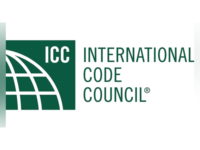The ICC, whose mission is to advocate for building safety and fire prevention, regularly develops and continuously updates a comprehensive set of model codes for residential and commercial buildings.
Most U.S. cities, counties and states choose building safety codes developed by the ICC as blueprints for their own building codes.
During the hearings, building officials, fire officials and other voting ICC members will listen to testimony in support of or against approximately 800 individual proposals on subjects as diverse as mechanical systems, framing, energy efficiency, fire safety, ventilation and electrical systems. After listening to the testimony and studying supporting documentation, the members will decide whether to incorporate changes proposed to the International Residential Code, the International Energy Conservation Code or the other codes that govern construction of single-family homes, duplexes and townhouses in most jurisdictions.
NAHB representatives participated in the first round of hearings for the code development cycle, which involved 2,200 proposals and two weeks of testimony from Feb. 18 through March 1 in Palm Springs, Calif. Their efforts achieved some favorable results on behalf of the home building industry and home buyers-but many of these votes are scheduled to come up again at the final hearings. Among the code change proposals:
- Fire sprinklers in one- and two-family homes and townhouses. Fire sprinkler proposals continue to be the most heavily debated and potentially most controversial of all code changes this cycle.
During the public hearings in Palm Springs, the committee disapproved all the fire sprinkler proposals, citing a lack of any compelling justification to require these systems in all newly constructed homes. Sprinkler proponents will need a two-thirds majority vote in Minneapolis to overturn the committee’s action.
At the hearings earlier this year, NAHB identified several concerns over these systems - among them, questioning whether most home owners are prepared to perform the maintenance required to ensure that the sprinklers remain operational.
Builders also cited the potential for pipes installed in attics to freeze in colder climates and they said that the sprinklers can be discharged accidentally, with damaging results. In areas served by wells or where water is scarce, the availability of an adequate water supply is another possible problem.
NAHB pointed to several existing code requirements that have contributed to a significant decline in fire-related deaths and injuries over the past 30 years.
The most effective improvement has been the introduction of hard-wired interconnected smoke alarms, which the code requires to be installed in every bedroom and on every floor. National Fire Protection Association reports conclude that about 890 fatalities could be avoided each year if every home had at least one working smoke alarm.
Proposals RB 62, RB 64, RB 65 and RB 66 will be heard during the IRC section of the hearings, which is scheduled to begin no earlier than 6:00 p.m. on Saturday Sept. 20.
- Wall bracing and roof uplift connections. Proposals to substantially increase required wall bracing and to require uplift clips for roof framing in all homes-even in areas where high winds are not known to occur-were defeated in Palm Springs.
The new proposals increase bracing and uplift connection requirements for larger houses and for houses in high-wind regions, where such increases may be justified, while maintaining typical bracing and roof connection practices for most one- and two-story homes in low-wind regions. NAHB hopes to gain approval at the final hearing for these hard-fought compromises.
- Accessibility. NAHB is opposing two proposals that affect multifamily builders. One, which was disapproved at the hearings in Palm Springs, would require all the apartments or condos in a multifamily building with four or more units to be served by an elevator. The proposal exceeds federal Fair Housing Act accessibility requirements.
NAHB and a number of other groups have submitted public comments requesting disapproval at the final hearings, nothing that federal law only requires those multifamily buildings constructed after March 13, 1991 to comply with federal accessibility requirements.
Also, because of their construction, these older buildings may not be able to achieve the required door widths, accessible route widths and door approach clearances, NAHB said. Many structural elements in these buildings, such as support walls and columns, cannot be changed to achieve the required accessible dimensions.
- Energy code changes. A proposal introduced during the Palm Springs hearings would have required all newly constructed buildings to immediately become 50 percent more energy efficient than currently required.
“NAHB will serve as the voice of housing on the future regulations that will govern the industry as the hearings progress,” said NAHB Construction Codes and Standards Committee Chair Andy Anderson, a remodeler in South Carolina.
“This is the last opportunity for voting members to make changes to the International Residential Code and the other ICC model codes before the 2009 edition is published,” Anderson said. “We need to make sure that these building codes continue to help us keep new homes safer-at a price first-time home buyers can afford.”




